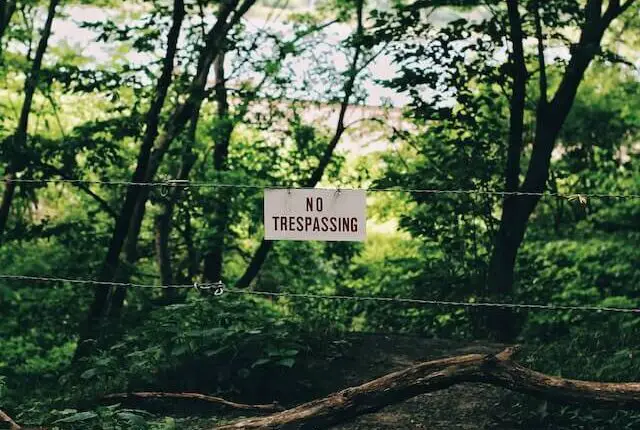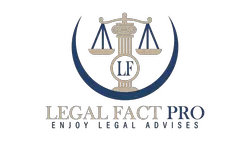
How to Get a no Trespass Order Lifted | 12 Tips by Expert
The contents of this web page are for informational and educational purposes only, and nothing you read is intended to be legal advice. Please review our disclaimer before taking action based upon anything you read or see.
Since we have two legs to balance on, people have become wanderers. Therefore, trespassing occasionally happens by mistake. Even though state laws and laws protecting property rights differ somewhat from state to state, property owners frequently have the authority to issue no-trespass orders under certain conditions. And if you receive one of such notifications in error, this article will walk you through how to get a no-trespass order lifted.
Furthermore, a property proprietor has the right to use their property in any way permitted by law. And that includes the authority to bar people from the premises.
This is achievable through the use of a no-trespass order. Trespassing is accessing someone else’s property without their consent or legal authorization. A trespasser may initially appear to be the property owner’s visitor, but they may change their status if they refuse to depart after being requested.
Police, sheriffs, and park guards enforce criminal violation rules. Thus, it’s best to learn How to get a no-trespass order lifted. Come along as we enlighten you on this.
Read More: How Long Is A No-Trespassing Order Good For
How to Get a no Trespass Order Lifted

You can get a no-trespass order lifted through the following steps:
- Consult with a lawyer
- Determine who issued the no-trespass order
- Review the terms of the no-trespass order
- Contact the issuer of the no-trespass order
- Request a meeting with the issuer to discuss lifting the order
- Present a compelling reason for lifting the order
- Provide evidence or witnesses to support your case
- Agree to any conditions or restrictions set by the issuer
- Follow the judge’s instructions
- Wait for the order to be lifted
- Obtain written confirmation that the order has been lifted
- Monitor the situation and comply with any restrictions to avoid future issues.
Consult with a lawyer
Consult with a lawyer as soon as possible if you are being accused of trespassing to get the no-trespassing order lifted. Your attorney might develop a defense that questions specific aspects of the prosecution’s case. Did the claimed incident take place on public property?
The property’s proprietor truly granted you approval to access it. When requested to depart the premises, did you do so? What kind of harm was truly caused by the situation?
Was the private designation of the land obvious? For your attorney to begin building your case, providing all relevant information to them as soon as feasible will be essential.
Getting your accusations completely dropped should be your attorney’s ultimate goal. Even comparatively small non-violent offenses can taint your otherwise clean record.
You require a lawyer aware of the significance of maintaining a spotless record. Your lawyer should be equally committed to protecting clients in encroachment cases, as in high-profile homicide cases.
Determine who issued the no-trespass order
Finding out who issued the no-entry order is the next stage in the process of having it removed.
Typically, the “occupier” of the property, such as the renter, contractor, or proprietor, can deny access to anyone they choose.
If they are working on behalf of the proprietor or tenant, they may also issue a no-trespassing order. So, it’s best to contact them and ask the right questions.
Review the terms of the no-trespass order
Reviewing the terms of the no-trespass order is also an important step. The no-trespass order’s conditions may be stated by the property proprietor orally or in writing. Most states allow property owners to grant entry approval for a specific time or use. The property proprietor may, however, examine and change the conditions at any moment.
Contact the issuer of the no-trespass order
A no-trespassing order is typically valid for two years after it is granted. You can contact the person who issued the no-trespass order to remove it before the two-year period is up.
Although you can do this orally, writing everything on paper is better to prevent misunderstandings. You must persuade them to contact the police and let them know that you are no longer trespassing from the land if they provide a copy of the initial trespass order to the police.
Request a meeting with the issuer to discuss lifting the order
The next step to get a no-trespass order lifted is to request a meeting with the issuer to discuss lifting the order. Additionally, a property proprietor has the right to bar you from entering their property unless you have some tenure.
If you arrive, they may declare that you are not permitted on the land and contact the authorities to have you detained for encroachment. There is no method to compel a landowner to grant you access. It is preferable to visit with them in person and have formal talks. Avoid using compulsion during the meeting, if possible.
Present a compelling reason for lifting the order
As the recipient of a no-trespass order, you can appeal the terms of the order by presenting a compelling reason for lifting the order. Include a justification for your presence on the property, why you think the order should be removed, and any other pertinent information.
The fact that the individual issuing the order was not allowed to do so could be a strong argument for removing it. The proprietor or a legitimate land resident must issue a valid no-trespass order.
An acquaintance, neighbor, or another person who is not a resident will not meet the law. And as a result, you might not be accountable for the violation.
Provide evidence or witnesses to support your case
In your appeal, you can provide evidence or witnesses to support your case. It’s ideal to engage qualified witnesses at this stage. You can also add corroborating evidence, like a picture demonstrating the absence of “no trespassing” signage.
Agree to any conditions or restrictions set by the issuer
When working on how to get a no-trespass order lifted, agreeing to any conditions or restrictions set by the issuer is a great step. On the other hand, it’s best to be cautious and review the conditions or restrictions thoroughly. You can ask a lawyer to assist you in any unclear section.
Follow the judge’s instructions
You must follow the judge’s instructions if you want a no-trespass order lifted. The general case meeting and the showing of the proof typically conclude this. The judge will outline the statutes that are relevant to you. Due to the significance of these instructions, numerous judges write out the instructions they want to give to the receivers of no-trespass orders.
Wait for the order to be lifted
Upon submission of your request to get a no-trespass order lifted, your appeal will be unbiased evaluation. And once this is successful, you’ll be notified promptly. At this point, it’s best to wait before taking any other step.
Obtain written confirmation that the order has been lifted
A no-trespass order is effective while it is in place until it is removed. You might be arrested while it’s in effect if you return to the property without any additional notice.
This order will still be in force until you obtain written authorization to enter the property from the proprietor or another approved individual. The easiest way to ensure that the order has been removed is to get written proof of it.
Monitor the situation and comply with any restrictions to avoid future issues.
If you receive a no-trespassing order and break it, you may be charged with one or more trespassing offenses. In addition, you’ll be charged for breaking the protection order. Thus, monitoring the situation and complying with any restrictions is best to avoid future issues.
Personal Opinion
Trespassing is a judicial word that covers a broad range of crimes committed against people or property. Regarding real estate legislation, trespassing refers to accessing property without the owner’s permission.
Receiving a no-trespass order is subject to both criminal and civil violation statutes. Furthermore, the police, constable, or park officers can execute these rules.
Getting a lawyer at this time who can examine the evidence and tell you of potential arguments is crucial. They may also bargain with the person who filed the charges against you. The above tips on how to get a no-trespass order lifted will also aid you immensely.
References
- Sacharoff, Laurent; “Trespass and Deception.” Brigham Young University Law Review.: https://papers.ssrn.com/sol3/papers.cfm?abstract_id=2719722
- “Criminal Law (Defense and the Dwelling) Act: https://www.irishstatutebook.ie/eli/2011/act/35/section/2/enacted/en/html#sec2

I’m a driven and accomplished law graduate and post-graduate, passionate about sharing my legal expertise via my blog. I hold a Bachelor’s degree in Law from the University of London (UK) and a Master’s in Law from the University of Derby (UK). Both gave me the foundational knowledge and skills to excel in my chosen career path.
Throughout my academic journey, I have gained extensive knowledge in various fields of Law, including Corporate and Business Law in the USA, Criminal Law, International Law, US Copyright law, and most importantly, American Constitutional law.


Comments are closed.